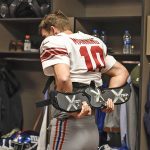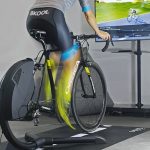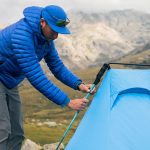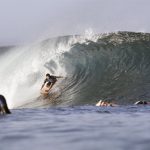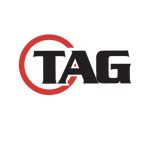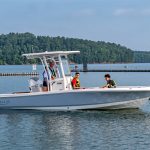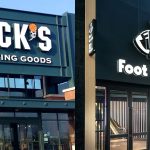Columbia Sportswear, parent company to Mountain Hardwear and Montrail, reported first quarter sales last week, (BOSS_0917) and The B.O.S.S. Report caught up Mountain Hardwear and Montrail president Mike Wallenfels for more details on the results from the two brands. Driven by robust demand for its technical sportswear and sleeping bags, revenues at Mountain Hardwear climbed 6% worldwide in the first quarter.
“Mountain Hardwear as a brand is behaving very consistently and operating very strongly,” said Mike Wallenfels, president of Mountain Hardwear, in an interview with B.O.S.S.
The economic downturn has somewhat slowed growth rates for the technical brand. In 2008, Mountain Hardwear's revenues jumped 15% to $95 million from $82.6 million a year ago, according to the 10K filing of its parent, Columbia Sportswear Co. Wallenfels particularly noted that the bankruptcy and subsequent liquidation of Joe's Sports & Outdoors impacted Mountain Hardwear not only in unpaid receivables but also in expected order rates for the year. He also said that to some degree, the brand did experience some order cancellations and delayed reorders that many other brands are feeling across retail. But he also believes the Mountain Hardwear is fairing better than many other brands.
“Some larger retailers are taking broad steps to reduce their future orders and Mountain Hardwear has been fairly immune from that. But it's not anything so dramatic that's it's altering our business,” said Wallenfels.
Wallenfels believes that although all consumer industries are feeling the impact of the downturn, the outdoor markets “are fairly less immune” than other sectors as consumers still look to enjoy outdoor activities. “I think outdoor in general is fairly healthy,” said Wallenfels.
But the brand is also seeing strong demand for many of its products. The best performance in the first quarter came from performance-oriented sportswear at more affordable prices. “It's not inexpensive by any means,” said Wallenfels.”But it's the $80 to $120 purchase rather than the $500 purchase. It's very high-performance and very true to the sport.”
Wallenfels said one trend he's noticed is that the casual side of sportswear is seeing some softness in the market. Mountain Hardwear, always a technical brand, appears to be benefiting from a decision made last year to make sure that the majority of its spring 2009 garments carried a particularly strong technical message “Right now, retailers seem to be reverting back to the core part of their business so that's been really been positive for us,” said Wallenfels.
Wallenfels also said Mountain Hardwear is “seeing relatively strong numbers” in sleeping bags and other equipment categories. The performance of outerwear and accessories (i.e., alpine gloves, boots and hats) is tougher to gauge since the first quarter is the smallest
sales volume of the year for those categories. Those categories are also highly dependent on weather.
Looking ahead, Wallenfels said average-selling price points in the outdoor and ski retail specialty space appear to have been coming down as consumers appear to be choosing less-expensive product and retailers in general have been discounting heavily to maintain clear inventories. The good news is that Fall 2008 goods have been cleared from the marketplace and that seems to be
benefitting Spring sales.
benefitting Spring sales.
“So much of retail sell-through has been based on liquidations but as we're moving through this inventory, we're seeing a much healthier spring/summer business as far as maintaining price points and maintaining higher-than-average price points,” said Wallenfels. “So
we're encouraged in general.”
Given the climate, Wallenfels said Mountain Hardwear is increasing its focus on bringing “unique” product to the marketplace and stressing those features at retail, through in-store clinics and marketing. For instance, its Lamina synthetic sleeping bag have seen a spike in sales as the down sleeping bags market has started to soften. “What we're doing with the brand is always trying to make sure we have something in every category that's has some uniqueness and innovation to it,” said Wallenfels.
Another success has been the active sports category, in
which the brand has found success developing a running collection of shorts and tops tied to the popularity of trail running. He said the line is “thriving” at many outdoor shops. As part of that effort, Mountain Hardwear has teamed with Montrail, also owned by Columbia Sportswear and now overseen by the Mountain Hardwear group, in cross-promoting the collection. It's part of an overall plan for the two brands to collaborate more in marketing, including having Mountain Hardwear athletes wear Montrail shoes.
which the brand has found success developing a running collection of shorts and tops tied to the popularity of trail running. He said the line is “thriving” at many outdoor shops. As part of that effort, Mountain Hardwear has teamed with Montrail, also owned by Columbia Sportswear and now overseen by the Mountain Hardwear group, in cross-promoting the collection. It's part of an overall plan for the two brands to collaborate more in marketing, including having Mountain Hardwear athletes wear Montrail shoes.
Regarding Montrail, Wallenfels said the brand is in the process of being repositioned around its heritage in trail running categories as the originator of the category back in the mid-nineties.
A big focus has been on updating styles and “working on creating lighter, faster, and more responsive shoes to really fit with what today's trail runner wants.” As it moves out of non-core models, Montrail's sales are declining. In 2008, Montrail's revenues declined 20% to $10.2 million from $12.7 million. But Montrail is getting good responses from retailers from its new lines.
Like Mountain Hardwear, Wallenfels said the Montrail team is working on bringing distinct, performanceoriented products to the marketplace. “Consumers are reacting if there's a story to tell,” said Wallenfels. “It has to be a brand they can trust and a product that serves a true function for whatever they're gong to do.”

